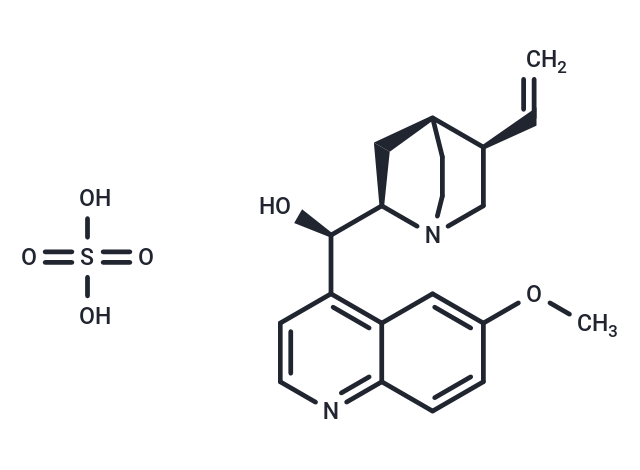Shopping Cart
- Remove All
 Your shopping cart is currently empty
Your shopping cart is currently empty

Quinine hemisulfate is an antiarrhythmic agent. Quinidine is a potent, orally active, selective cytochrome P450db inhibitor. Quinine hemisulfate is also a blocker of K + channel with an IC 50 of 19.9 μM. Quinine hemisulfate has potential to be used for malaria research [1] [2] [3].

| Pack Size | Price | Availability | Quantity |
|---|---|---|---|
| 25 mg | $1,520 | 1-2 weeks | |
| 50 mg | $1,980 | 1-2 weeks | |
| 100 mg | $2,500 | 1-2 weeks |
| Description | Quinine hemisulfate is an antiarrhythmic agent. Quinidine is a potent, orally active, selective cytochrome P450db inhibitor. Quinine hemisulfate is also a blocker of K + channel with an IC 50 of 19.9 μM. Quinine hemisulfate has potential to be used for malaria research [1] [2] [3]. |
| Molecular Weight | 746.92 |
| Formula | C40H50N4O8S |
| Cas No. | 804-63-7 |
| Relative Density. | 1.0807 g/cm3 (Estimated) |
| Storage | Powder: -20°C for 3 years | In solvent: -80°C for 1 year | Shipping with blue ice. |
| Solubility Information | DMSO: Soluble |

Copyright © 2015-2025 TargetMol Chemicals Inc. All Rights Reserved.